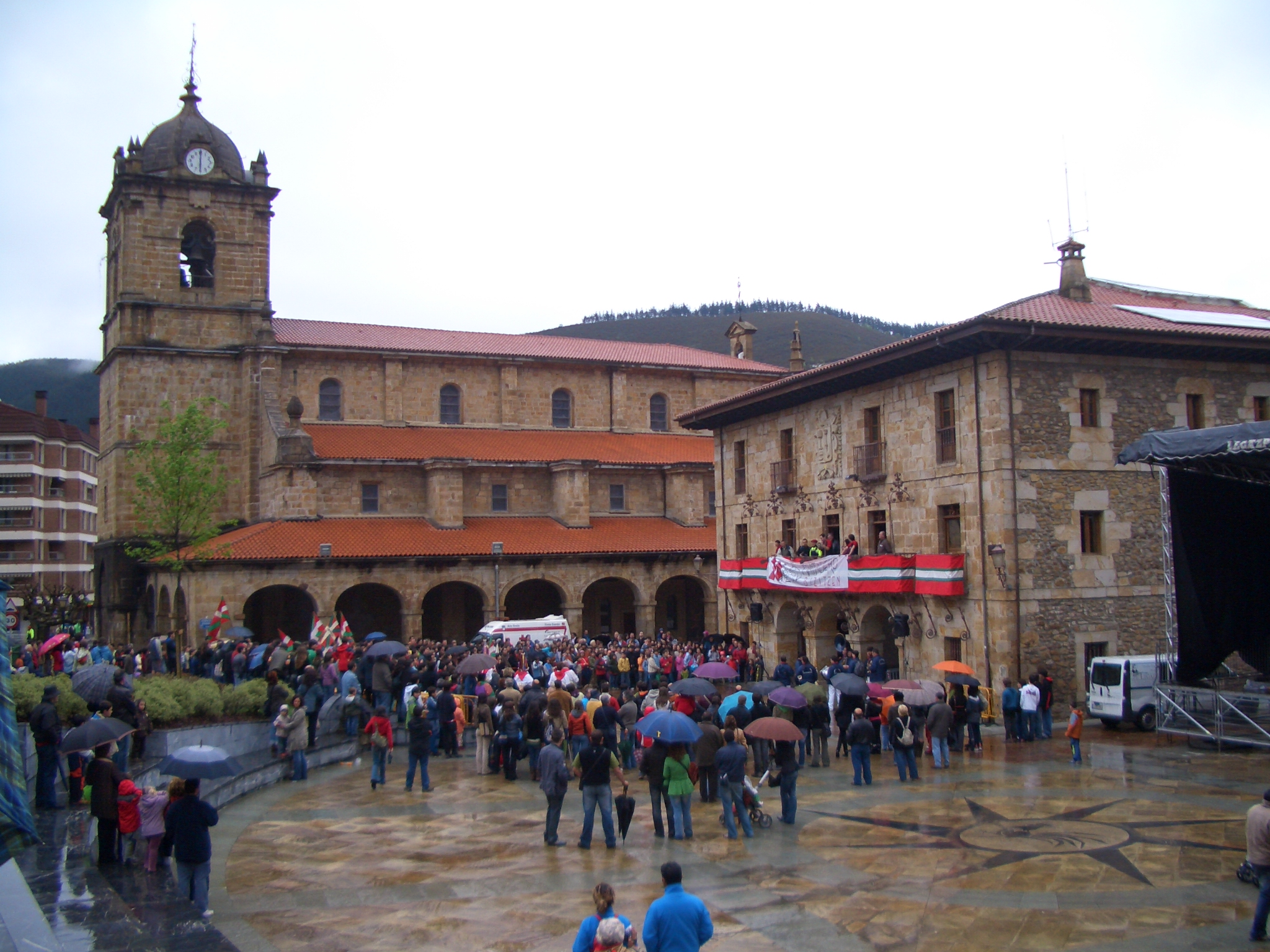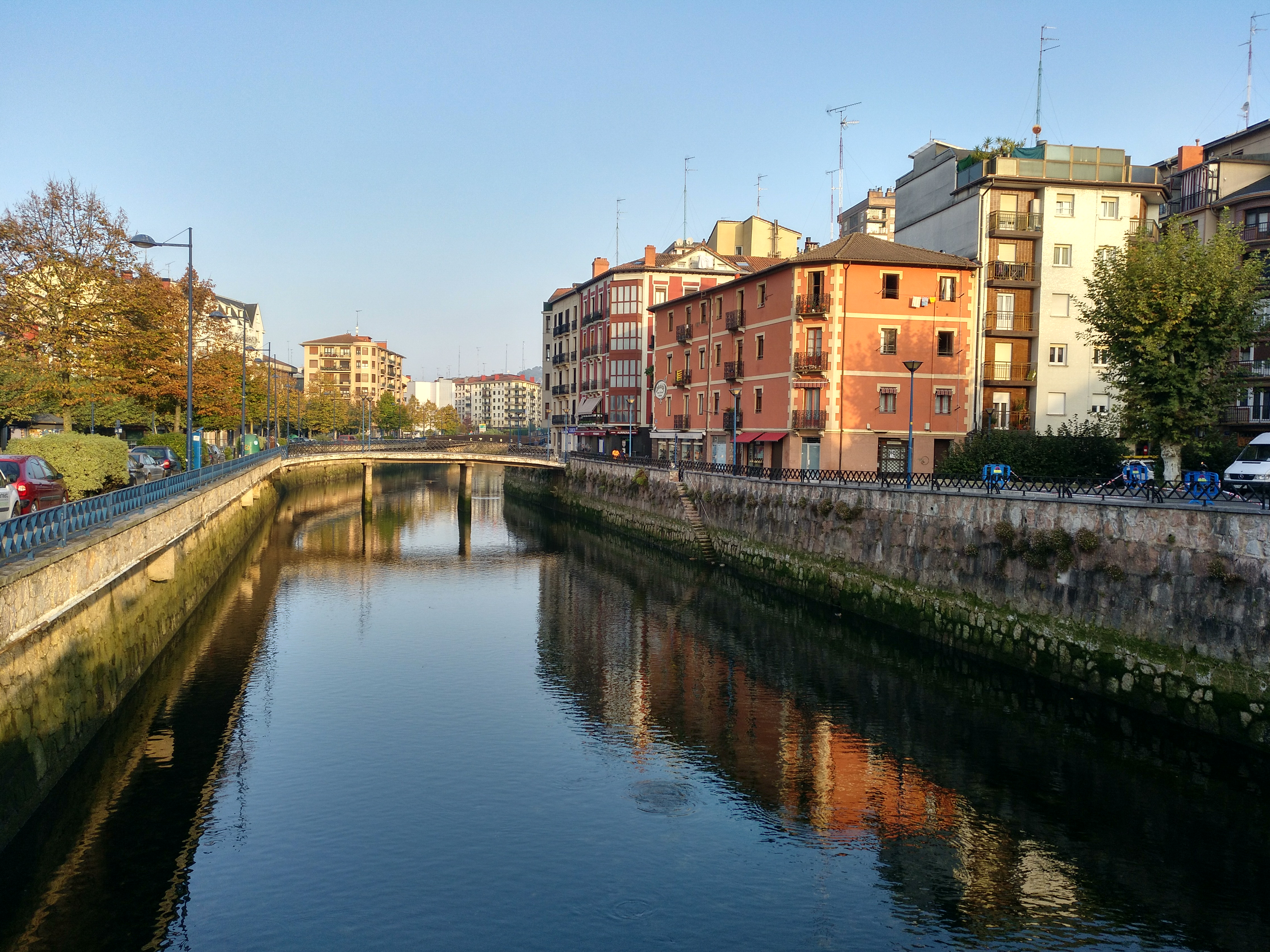|
Legazpi, Spain
Legazpi is a city in the Gipuzkoa province of the Autonomous Community of the Basque Country, northern Spain. Legazpi is a town of about 9,000 inhabitants located on top of the Urola valley, in Gipuzkoa. Surrounded by mountains, and at the foot of the Aizkorri mountain range, its predominant economic activity is industrial (manufacturing, metal processing, plastics). The rich industrial tradition of Legazpi goes back to the High Middle Ages The High Middle Ages, or High Medieval Period, was the period of European history that lasted from AD 1000 to 1300. The High Middle Ages were preceded by the Early Middle Ages and were followed by the Late Middle Ages, which ended around AD ..., when transformation of iron ore was achieved by means of the ''haizeolak'' ("ironworks moved by wind"). During the 14th century, wind energy came to be replaced by water in the metal processing with the foundation of several "ironworks propelled by water" (''ur'' 'water' and ''ola'' originally ... [...More Info...] [...Related Items...] OR: [Wikipedia] [Google] [Baidu] |
Gipuzkoa
Gipuzkoa (, , ; es, Guipúzcoa ; french: Guipuscoa) is a province of Spain and a historical territory of the autonomous community of the Basque Country. Its capital city is Donostia-San Sebastián. Gipuzkoa shares borders with the French department of Pyrénées-Atlantiques at the northeast, with the province and autonomous community of Navarre at east, Biscay at west, Álava at southwest and the Bay of Biscay to its north. It is located at the easternmost extreme of the Cantabric Sea, in the Bay of Biscay. It has of coast land. With a total area of , Gipuzkoa is the smallest province of Spain. The province has 89 municipalities and a population of 720,592 inhabitants (2018), from which more than half live in the Donostia-San Sebastián metropolitan area. Apart from the capital, other important cities are Irun, Errenteria, Zarautz, Mondragón, Eibar, Hondarribia, Oñati, Tolosa, Beasain and Pasaia. The oceanic climate gives the province an intense green co ... [...More Info...] [...Related Items...] OR: [Wikipedia] [Google] [Baidu] |
Autonomous Community
eu, autonomia erkidegoa ca, comunitat autònoma gl, comunidade autónoma oc, comunautat autonòma an, comunidat autonoma ast, comunidá autónoma , alt_name = , map = , category = Autonomous administrative division , territory = , upper_unit = , start_date = 1979–1983 , legislation_begin = Spanish Constitution of 1978 , legislation_end = , end_date = , current_number = 17 autonomous communities 2 autonomous cities , number_date = , type = , status = , exofficio = , population_range = Autonomous communities:319,914 ( La Rioja) – 8,464,411 (Andalusia)Autonomous cities:84,202 (Ceuta) – 87,076 (Melilla) , area_range = Autonomous communities:4,992 km2 (Balearic Islands) – 94,223 km2 (Castile and León)Autonomous cities:12.3 km2 (Melilla) – 18.5 km2 (Ceuta) , government = Autonomous government , subdivision = Pro ... [...More Info...] [...Related Items...] OR: [Wikipedia] [Google] [Baidu] |
Basque Country (autonomous Community)
The Basque Country (; eu, Euskadi ; es, País Vasco ), also called Basque Autonomous Community ( eu, Euskal Autonomia Erkidegoa, links=no, EAE; es, Comunidad Autónoma del País Vasco, links=no, CAPV), is an autonomous community of Spain. It includes the provinces (and historical territories) of Álava, Biscay, and Gipuzkoa, located in the north of the Iberian Peninsula, bordering on the autonomous communities of Cantabria, Castile and León, La Rioja, and Navarre, and the French region of Nouvelle-Aquitaine. The Basque Country or Basque Autonomous Community is enshrined as a ' nationality' within the Spanish State in its 1979 statute of autonomy, pursuant to the administrative acquis laid out in the 1978 Spanish Constitution. The statute provides the legal framework for the development of the Basque people on Spanish soil. Navarre, which had narrowly rejected a joint statute with Gipuzkoa, Álava and Biscay in 1932, became a full-fledged foral autonomous communit ... [...More Info...] [...Related Items...] OR: [Wikipedia] [Google] [Baidu] |
Spain
, image_flag = Bandera de España.svg , image_coat = Escudo de España (mazonado).svg , national_motto = '' Plus ultra'' ( Latin)(English: "Further Beyond") , national_anthem = (English: "Royal March") , image_map = , map_caption = , image_map2 = , capital = Madrid , coordinates = , largest_city = Madrid , languages_type = Official language , languages = Spanish , ethnic_groups = , ethnic_groups_year = , ethnic_groups_ref = , religion = , religion_ref = , religion_year = 2020 , demonym = , government_type = Unitary parliamentary constitutional monarchy , leader_title1 = Monarch , leader_name1 = Felipe VI , leader_title2 = Prime Minister , leader_name2 = Pedro Sánchez , legislature = ... [...More Info...] [...Related Items...] OR: [Wikipedia] [Google] [Baidu] |
Aizkorri
Aizkorri or Aitzgorri (, meaning in Basque 'bare stone', literally 'red stone') is a massif, the highest one of the Basque Autonomous Community (Spain) with 1,551 m AMSL at its highest point (peak Aitxuri, meaning 'white stone'). The massif is formed by a crest of limestone summits aligned north-west to south-east all in a row at the south of the province of Gipuzkoa, namely Artzanburu, Andreaitz, Arbelaitz (1,513 m), Iraule (1,511 m), Aitxuri, Aketegi (1,549 m) and Aizkorri (1,528 m). Despite its slightly lower height, this summit is the most popular one. The Aizkorri massif is one of the most conspicuous geological formations on the Basque Mountains range. The mountain range is delimited at either end by the Biozkornia and San Adrian passes. On the one end the massif stretches west to the Aloña massif, on the other one to the Altzania massif (highest summit Aratz). The major Madrid-Irun railway cuts its way through the northern steep slopes of the ... [...More Info...] [...Related Items...] OR: [Wikipedia] [Google] [Baidu] |
High Middle Ages
The High Middle Ages, or High Medieval Period, was the period of European history that lasted from AD 1000 to 1300. The High Middle Ages were preceded by the Early Middle Ages and were followed by the Late Middle Ages, which ended around AD 1500 (by historiographical convention). Key historical trends of the High Middle Ages include the rapidly increasing population of Europe, which brought about great social and political change from the preceding era, and the Renaissance of the 12th century, including the first developments of rural exodus and urbanization. By 1250, the robust population increase had greatly benefited the European economy, which reached levels that would not be seen again in some areas until the 19th century. That trend faltered during the Late Middle Ages because of a series of calamities, most notably the Black Death, but also numerous wars as well as economic stagnation. From around 780, Europe saw the last of the barbarian invasions and became mor ... [...More Info...] [...Related Items...] OR: [Wikipedia] [Google] [Baidu] |
Urola
The Urola is a river and valley in Gipuzkoa, Basque Autonomous Community, Spain. The river is only 55 kilometres in length, and runs from headwaters in the Aizkorri Mountains, near the town of Legazpi to its outflow into the Cantabrian Sea at the town of Zumaia on the Bay of Biscay . It forms the border between the municipalities of Zumárraga and Urretxu, and further downriver, it passes through the towns of Azkoitia and Azpeitia. The word ''urola'' comes from two basque words ''Ur'' and ''Ola'', meaning "water" and "factory" respectively referring to the water mills which have stood in the valley since the Middle Ages. See also * List of rivers of Spain This is an incomplete list of rivers that are at least partially in Spain. The rivers flowing into the sea are sorted along the coast. Rivers flowing into other rivers are listed by the rivers they flow into. Rivers in the mainland Iberian Peninsu ... References Rivers of the Basque Country (autonomous community) ... [...More Info...] [...Related Items...] OR: [Wikipedia] [Google] [Baidu] |



